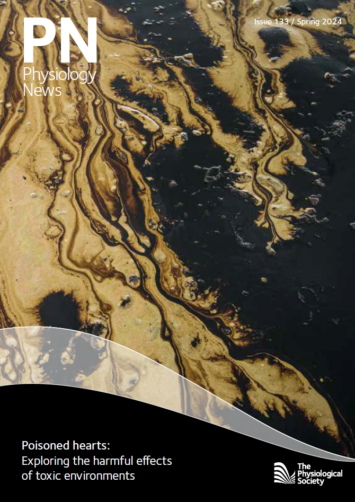
Physiology News Magazine
Where are the women in cardiac rehabilitation?
Why we need more female scientists dedicated to improving the lives of women at risk of and with cardiovascular disease
Features
Where are the women in cardiac rehabilitation?
Why we need more female scientists dedicated to improving the lives of women at risk of and with cardiovascular disease
Features
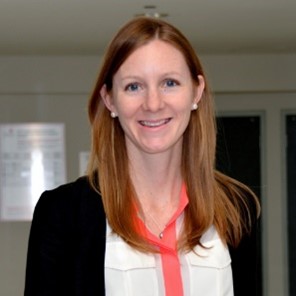
Dr Jennifer Reed,
University of Ottawa Heart Institute, Canada
I am a Clinician-Scientist (Registered Kinesiologist-Scientist), the Director of the Exercise Physiology and Cardiovascular Health Lab (EPCHL) and was recently appointed as Chair of Cardiac Rehabilitation in the Division of Cardiac Prevention and Rehabilitation at the University of Ottawa Heart Institute (UOHI), which is Canada’s largest and foremost heart health centre dedicated to understanding, preventing, and treating cardiovascular disease. I am also an Associate Professor in the School of Epidemiology and Public Health in the Faculty of Medicine, and Adjunct Professor in the School of Human Kinetics in the Faculty of Health Sciences at the University of Ottawa. As I pull open the gleaming glass doors of 40 Ruskin Avenue, where the UOHI is located, I am reminded nearly daily that these roles are an honour and there is much to do when it comes to women’s representation in cardiovascular health research.
A world of women focused on women’s health
I have enjoyed a life-long passion for exercise and sport. I earned a doctorate in Kinesiology with a specialisation in exercise physiology from the Pennsylvania State University. Working in the world-renowned Noll Lab where Dr Elsworth R ‘Buz’ Buskirk once walked the halls, I studied clinical exercise physiology and neuroendocrinology in the Women’s Health and Exercise Lab. My supervisors (N Williams, MJ De Souza) were women, my lab-mates, those who survived in the trenches with me, were women, and my doctoral research focused on the role of energy deficiency in reproductive, metabolic, and bone health of recreational and competitive female athletes. A world of women focused on women’s health. But little did I know that this experience would starkly contrast with my academic pursuits to follow.
Where are the women in cardiac rehabilitation?
Soon after beginning a Postdoctoral Research Fellowship in cardiac prevention and rehabilitation at the UOHI in 2013 (I was awarded the Jan & Ian Craig Cardiac Prevention and Rehabilitation Endowed Fellowship), I began to wonder: Where are the women with cardiovascular disease? Why are women under-represented in our exercise based cardiac rehabilitation programmes? Where are the women-focused programmes to meet their needs and address their poor cardiovascular health?
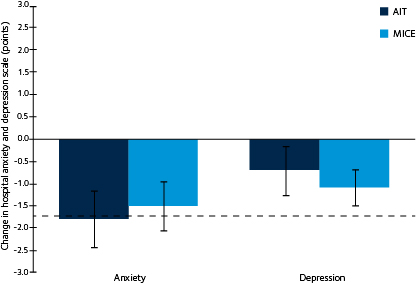
The state of affairs in women’s cardiovascular health
Cardiovascular disease continues to be a principal cause of premature death in women, and was responsible for 35% of total deaths in women in 2019 (Vogel et al., 2021). Yet, research shows that more than 40% of women lack knowledge of cardiovascular disease risk factors, or do not know their own risk level (Mosca et al., 2013). This awareness gap is substantially greater for racial and ethnic minority groups (e.g., Black, Hispanic) (Mosca et al., 2013). Women who suffer an acute coronary event (i.e. myocardial infarction, sudden cardiac death) are more likely than men to be physically inactive, have lower exercise capacity, and die in the next year. They also report poorer quality of life and mental health. There are global calls for action from healthcare providers and patients to improve the management of cardiovascular disease for women.
Cardiovascular disease continues to be a principal cause of premature death in women, and was responsible for 35% of total deaths in women in 2019. Yet, research shows that more than 40% of women lack knowledge of cardiovascular disease risk factors, or do not know their own risk level
Current cardiac rehabilitation programmes do not meet women’s needs
Strong evidence demonstrates that exercise based cardiac rehabilitation participation improves exercise capacity, quality of life, mental health, and cardiometabolic risk factors, and reduces cardiovascular morbidity and mortality. A Cochrane systematic review showed that cardiac rehabilitation likely results in a 42% and 28% reduction in hospitalisations and myocardial infarctions, respectively (Dibben et al., 2021).
Current cardiac rehabilitation programmes do not appear to meet women’s needs, as women are less likely to adhere to and complete current cardiac rehabilitation despite poorer cardiovascular disease risk-factor control. For those who participate in cardiac rehabilitation, more women than men demonstrate poor exercise capacity, experience anxiety and depression, and present with obesity, hypertension, diabetes, and dyslipidaemia.
Cardiac rehabilitation programmes may fail to achieve minimal clinically important differences in women’s cardiovascular risk factors. Reviews, including our own, and patient interviews reveal that women perceive the following as deterrents to adherence to current cardiac rehabilitation programmes: time constraints; inflexible class times; lack of motivation; boring classes; not challenging enough; or, services tailored to older people’s needs (Vidal-Almela et al., 2021). New strategies for programmes that meet women’s needs are required; fortunately, efforts by many scientists to identify and develop such strategies are underway.
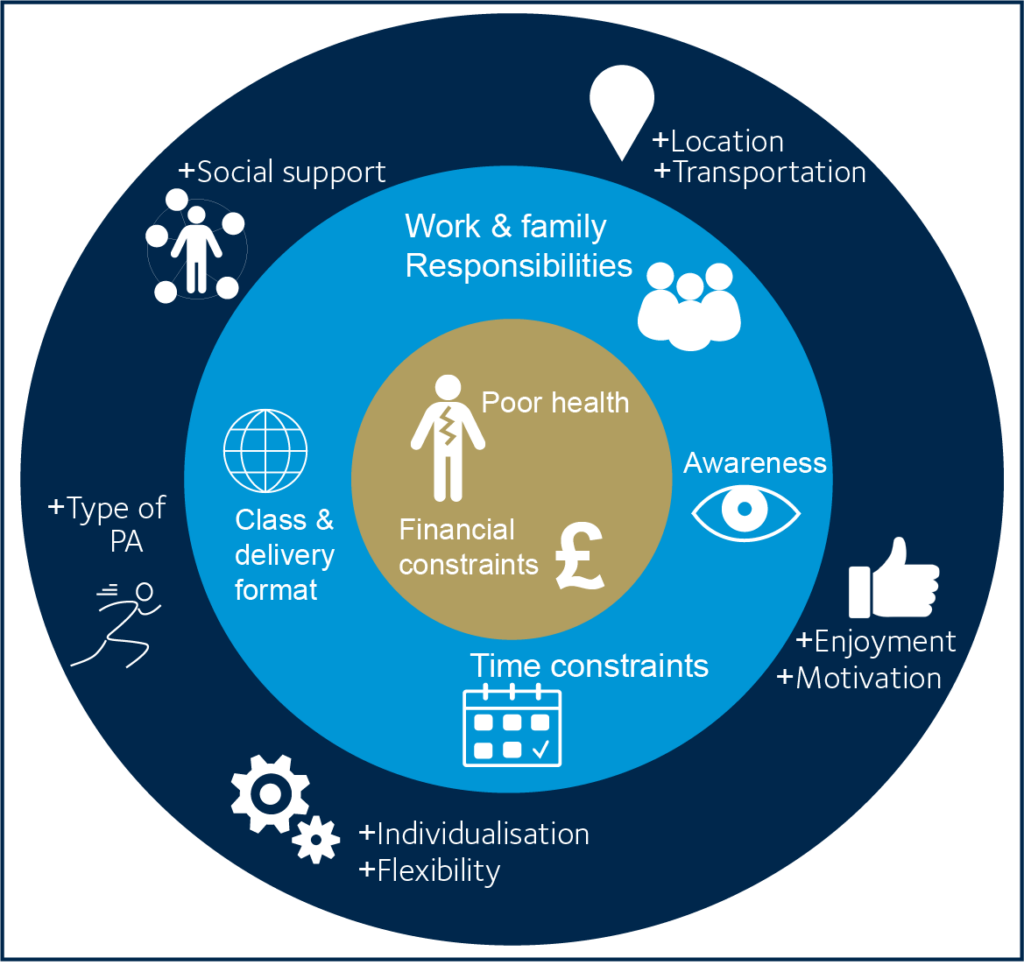
Growing a research programme focused on women’s cardiovascular health and exercise
Over the previous 11 years (a gift of time, but oh how quickly it passes), my mentors, colleagues, trainees, and I have (i) examined the role of physical activity as a fundamental marker of health and wellbeing among nurses in Canada (most of whom are women) (Reed et al., 2018), (ii) designed and tested a dance based high-intensity interval training (HIIT) programme for women with cardiovascular disease (see Fig.1) (Reed et al., 2019), (iii) shared our perspective on HIIT meeting the needs of women enrolled in cardiac rehabilitation (Way and Reed, 2019), (iv) investigated sex- and gender-based responses to exercise-based cardiac rehabilitation and physical activity programmes (O’Neill et al., 2022; Way et al., 2021), and (v) shared a review highlighting how cardiac rehabilitation can be enhanced by understanding the specific needs of women (see Fig.2).
Working alongside women with lived experiences of these conditions to design and provide practical exercise strategies to target their cardiovascular health
Our motivation for these projects was emphasis that novel elements such as programme offerings, convenient settings, and opportunities for socialisation should be considered when designing cardiac rehabilitation programmes (Vidal-Almela et al., 2021). Most recently, I was awarded peer-reviewed funding from the Canadian Institutes of Health Research (CIHR) to lead a randomised controlled trial testing the efficacy of various exercise modalities on the physical and mental health of women with cardiovascular disease. Our work is only a mere fraction of the outstanding achievements by other scientists across the globe who are dedicated to understanding, preventing, and treating cardiovascular disease in women.
Meet some of the many other inspiring women focused on women’s cardiovascular health and exercise research
As I established (September 2013) and have since grown my research programme, not only have I focused on women’s cardiovascular health and exercise, but I have also recruited, trained, and, importantly, learned from the next generation of female scientists, who are passionate about women’s cardiovascular health and cardiac rehabilitation. To address the under-representation of women in exercise science research and leadership positions, I launched an International Student
Research Internship for Women in 2019. Using a virtual format to reduce known barriers associated with access (i.e. location, time, and participation costs), the selected interns learn about our research programme by engaging in project management, data collection, quality assurance procedures and processes, manuscript development, and knowledge translation activities. I am hopeful this strategy will support more females into faculty and leadership positions.
Dr Carley O’Neill, PhD
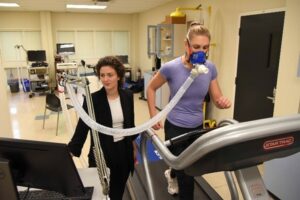
Carley completed her Postdoctoral Fellowship in Cardiac Prevention and Rehabilitation at the UOHI (2019-2021). She is currently an Assistant Professor in the School of Kinesiology at Acadia University, Canada, and Director of the Acadia Cardiac Maintenance Program. Her research programme focuses on improving access and options for exercise-based rehabilitation among women, particularly for those living in rural communities and from under-represented groups (e.g. French-speaking and 2SLGBTQ+ communities). Carley is passionate about increasing the representation of women in chronic disease research and is hopeful that her developing research programme will improve access to quality and effective exercise-based rehabilitation for all who identify as women across Canada and beyond (O’Neill et al., 2022). She considers herself fortunate to have had all female mentors throughout her graduate and postgraduate training, and firmly believes that seeing aspirational women mentors approach worklife balance within academic roles instilled in her the confidence to pursue a similar path; this is one of the many reasons why the equal representation of women in science and leadership positions is critical.
Dr Kimberley Way, PhD
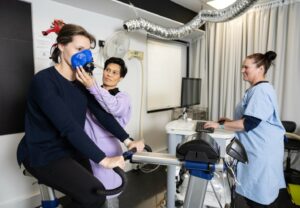
Kim completed a Postdoctoral Fellowship in my Exercise Physiology and Cardiovascular Health Lab at the UOHI (2018-2020). She is an early-career researcher at the Institute of Physical Activity and Nutrition at Deakin University (which is led by women) and a Lecturer in Clinical Exercise Physiology in the School of Exercise and Nutrition Sciences at Deakin University, Australia. Additionally, Kim is an Accredited Exercise Physiologist with over 10 years’ experience, where she has predominantly worked in cardiac rehabilitation settings. Her research programme centres on providing pragmatic exercise training and testing solutions to identify and manage cardiovascular disease in cardiometabolic populations. She also uses cutting-edge imaging techniques to understand changes to cardiovascular physiology. Despite females constituting 50% of the population, Kim was alarmed and disheartened by the undertreatment and under-representation of women in cardiovascular disease research. This sparked a passion to investigate the unique changes to the cardiovascular system in women with cardiometabolic conditions and to work alongside women with lived experiences of these conditions to design and provide practical exercise strategies to target their cardiovascular health (Way et al., 2021).
Isabela Roque Marçal, MSc, PhD student

Isabela is a PhD student in my Exercise Physiology and Cardiovascular Health Lab at the UOHI. Her dissertation research is investigating the sex and gender differences in the effectiveness of varying exercise training programmes in improving the short- and long-term physical and mental health of patients with cardiac implantable electronic devices. Isabela’s personal experiences in Brazil heavily influenced her aspirations to pursue doctoral studies in Canada. She completed her MSc studies at an institution with limited resources, in a country continuously suffering from substantial financial cuts in research. She understood that higher education and science afforded opportunities, and if she wanted to expand her research skills, experiences, and accomplishments, she would have to ‘jump in with both feet’. Isabela was awarded the 2021 International Student Research Internship for Women, which introduced her to women’s heart health and exercise research (Marçal et al., 2023). Women often receive exercise therapies based on research trials with insufficient samples of women and, thus, do not appropriately consider their unique biology and psychology. These sex and gender disparities and lack of data on important outcomes limit our understanding of women’s responses to exercise programmes. Isabela strongly feels it is our generation’s responsibility to make amends for these inequities to inform and change the course of future research focused on women’s heart health and exercise.
Seeing aspirational women mentors approach work-life balance within academic roles instilled in her the confidence to pursue a similar path; this is one of the many reasons why the equal representation of women in science and leadership positions is critical
The future is unknown but promising
Here we are, a few of the many female scientists who are passionate about women’s cardiovascular health and exercise. We are unsure of what the future holds. But we hope that views from the rearview mirror will show that our efforts, scientific rigour, and passion have positively impacted the lives of women at risk of and with cardiovascular disease.
References
Dibben G et al. (2021). Exercise-based cardiac rehabilitation for coronary heart disease. Cochrane Database of Systematic Reviews. 11, (11), CD001800.
O’Neill CD et al. (2022). Sex and age differences in anxiety and depression levels before and after aerobic interval training in cardiac rehabilitation. Journal of Cardiopulmonary Rehabilitation and Prevention 42, (1):15-21.
Marçal IR et al. (2023). The effects of different exercise modalities and intensities on arterial stiffness in patients with coronary artery disease. Journal of Cardiopulmonary Rehabilitation and Prevention 43, (5):384-385.
Mosca L et al. (2013). Fifteen-year trends in awareness of heart disease in women: results of a 2012 American Heart Association national survey. Circulation 127, (11):1254-1263, e1251-1229.
Reed JL et al. (2018). Influence of the workplace on physical activity and cardiometabolic health: Results of the multi-centre cross-sectional Champlain Nurses’ study. International Journal of Nursing Studies 81, 49-60.
Reed JL et al. (2019). The effects of aerobic interval training and moderate-to-vigorous intensity continuous exercise on mental and physical health in women with heart disease. European Journal of Preventive Cardiology 26, (2):211-214.
Vidal-Almela S et al. (2021). Lessons learned from community- and home-based physical activity programs: A narrative review of factors influencing women’s participation in cardiac rehabilitation. European Journal of Preventive Cardiology 28, (7):761-778.
Vogel B et al. (2021). The Lancet women and cardiovascular disease Commission: reducing the global burden by 2030. The Lancet 397, (10292):2385-2438.
Way KL, Reed JL (2019). Meeting the needs of women in cardiac rehabilitation. Circulation 139, (10):1247-1248.
Way KL et al. (2021). Sex differences in cardiometabolic health indicators after hiit in patients with coronary artery disease. Medicine and Science in Sports and Exercise 53, (7):1345-1355.
